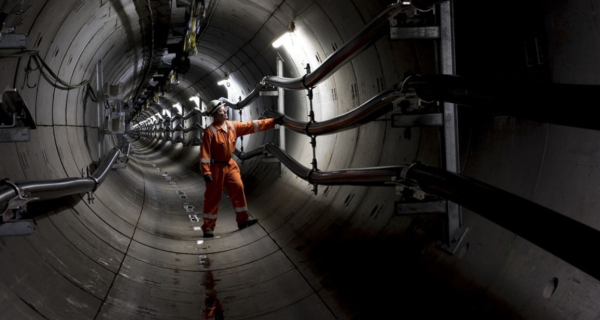London Power Tunnels
Contents |
[edit] Introduction
The London Power Tunnels project is a National Grid infrastructure investment in London’s electricity transmission system. The project is the first significant renovation of the city’s power grid since the 1960s. The total cost is estimated at £1bn and is expected to take 18 years.
Much of London’s electricity infrastructure is already delivered through a network of underground cables. However, the majority of this network is just below the surface of the road, which means maintenance (and any significant replacement) takes place above ground - causing significant disruption to the city’s traffic. The construction of new tunnels requiring a significant amount of excavation under Tube lines, canals and rivers provides an alternative.
[edit] Section One
The first phase of the project, known as LPT1, began in February 2011 and was completed in 2018.
This phase concentrated on constructing a 30km network of underground tunnels from Hackney to Willesdon from east to west, and from Kensal Green to Wimbledon in the south. The works required the installation of the longest single-length power cables in an underground utility tunnel in the country.
The tunnels carry 192km of 400kV cable and 30km of 132kV cable. This created 10 new transmission circuits which are able to support 20% of London’s electricity demand.
To support National Grid’s sustainability initiatives, the organisation recycled 99% of the materials excavated during this phase of the project.
[edit] Section Two
Referred to as London Power Tunnels (LPT2), the second phase of the project began in March 2020. This will carry a network of cable tunnels from Wimbledon to Crayford. It is projected that LPT2 will be fully operational by 2026.
The majority of LPT2 tunnels will be approximately 30m deep. This is roughly equivalent to the height of a 10 storey building. This second phase will result in a new network of cable tunnels approximately 32.5km in length.
[edit] Related articles on Designing Buildings
Featured articles and news
A change to adoptive architecture
Effects of global weather warming on architectural detailing, material choice and human interaction.
How big is the problem and what can we do to mitigate the effects?
Overheating guidance and tools for building designers
A number of cool guides to help with the heat.
The UK's Modern Industrial Strategy: A 10 year plan
Previous consultation criticism, current key elements and general support with some persisting reservations.
Building Safety Regulator reforms
New roles, new staff and a new fast track service pave the way for a single construction regulator.
Architectural Technologist CPDs and Communications
CIAT CPD… and how you can do it!
Cooling centres and cool spaces
Managing extreme heat in cities by directing the public to places for heat stress relief and water sources.
Winter gardens: A brief history and warm variations
Extending the season with glass in different forms and terms.
Restoring Great Yarmouth's Winter Gardens
Transforming one of the least sustainable constructions imaginable.
Construction Skills Mission Board launch sector drive
Newly formed government and industry collaboration set strategy for recruiting an additional 100,000 construction workers a year.
New Architects Code comes into effect in September 2025
ARB Architects Code of Conduct and Practice available with ongoing consultation regarding guidance.
Welsh Skills Body (Medr) launches ambitious plan
The new skills body brings together funding and regulation of tertiary education and research for the devolved nation.
Paul Gandy FCIOB announced as next CIOB President
Former Tilbury Douglas CEO takes helm.
UK Infrastructure: A 10 Year Strategy. In brief with reactions
With the National Infrastructure and Service Transformation Authority (NISTA).
Ebenezer Howard: inventor of the garden city. Book review.
Airtightness Topic Guide BSRIA TG 27/2025
Explaining the basics of airtightness, what it is, why it's important, when it's required and how it's carried out.






















